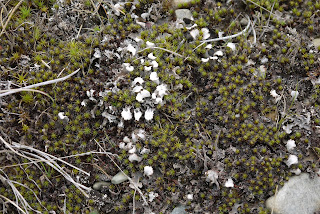Lately I find myself rather like Thoreau, surveying all the
farms (for I live in farm country) and appraising their assets while
daydreaming of living in the country. I
drive slowly along the dirt roads, making offers, retracting them, testing the
soil, pondering the foundations of the houses, orchestrating deals and
undertaking renovations in my imagination.
A glance in the rearview mirror sobers me up: the zigzagging tire tracks
of my car would suggest to anyone that I am driving drunk or at the very least
impaired. Which, in a certain sense, I
suppose I am: impaired by imagination,
impaired by nostalgia for a vanishing land. Old abandoned farmsteads capture my fancy. I muse: which place shall it be? what house seems ideal? if I woke up in the
morning here, what would it be like? These places just need a little TLC and duct tape to make them viable.
I do not wish to farm.
Indeed, if I see crops on or near the abandoned
farmhouse, I quickly as possible return that land in my imagination to pre-ag
days of prairie or mixed prairie plantings—grasses, reeds, scrubby bushes and
twisty stunted trees. “My” land would
need to promise habitat for inhabitants other than me. Ideally, the territory would be mixed: gnarly oak forest for the deer, a pond, slough, or pothole with reedy marsh full
of cattails for the ducks, geese, and songbirds, and open savannah for the
harriers to hunt and perform their sky dances.
An ecotone is exactly what I’d like.
An ecotone is a border zone, an area where two distinct habitats butt up
against each other. The grassland
brushes up against the forest, and a marshy pond acts as a great resource for
animals of both woodland and prairie zones.
The biological diversity of this transitional zone is great, greater
than that found in either woodland or prairie on its own.
I particularly adore the Northern Harrier, a hawk I would
never have noticed had I not moved to the Red River Valley some 19 years
ago. Even then my prejudice against the
flat aspect of the land prevented me from noticing the harrier until nearly 13
years later. And until the last month, I
did not know what to do next with my growing interest in this fascinating hawk. October found me in the basement digging
through a box of my late father’s books. Way always leads on to way when one sorts
through books and after finding the book I came for my hands lit on a copy of Irish
Nocturnes by essayist Chris Arthur from Northern Ireland. I started to read Arthur’s essays that morning, fascinated with
his meditations about the corncrake and the kingfisher, and mesmerized by his
handling of memory and time. As I read
his words I asked if could write more carefully about birds, too. Could I pursue the harrier not only with a
camera but also with words? And as way leads on to way, reading books led me to
internet research about the harrier and yet another writer from Northern
Ireland, Don Scott, and his fabulous monographs on the hen harrier.
The harrier in Ireland is a rare creature, rather like the
fabled unicorn. Many people have never seen it. Scott’s scientific
research in The Hen Harrier -- In the Shadow of Slemish highlights the threats to harriers in County Antrim, N.
Ireland: merciless persecution by
humans, overgrazing by sheep, loss of marshland and moorland due to
agricultural practices, peat cutting, and wind turbines. My own photographs reveal comparative practices in the United States that threaten our harriers. Here are only a few of the potential threats
to harriers and harrier territory:
Wind turbines, while generating energy, often kill birds who cannot see the white blades against a white sky:
Grazing from farm animals disrupts land that the ground-nesting harriers require:
Pumping water out of marshlands drains territory that the harriers require for nesting and hunting:
Cutting down and burning shelter belts decreases biodiversity in harrier country:
Burning sloughs to increase available cropland decreases biodiversity and reduces nesting and hunting territory:
Burning cattails near a slough to gain 20 feet of cropland takes away ever-diminishing requirements for a bio-diverse community:
The very ecotone zone that fuels my fantasies and fosters biological diversity is under threat.
In the upper Midwest, it sometimes seems that it would suit folks fine if
the entire territory were put into endless agricultural fields relieved only by massive oil fields. Damn the badlands, the
prairie potholes, and the few stands of trees and shelterbelts left over from
CCC days. Flatten the land out;
eliminate ecotones; banish diversity; view the land as only a commodity.
While harrier numbers in America are still high, they are on
the decline due to habitat loss as a result of human activity. The threats to harriers are equally threats to
us all. Way will lead onto way as my harrier
watch changes under the influence of the work of two very different writers
from N. Ireland. I will write more
carefully in the future, and I will continue shopping like Thoreau -- the only kind of
shopping I intend to do on Black Friday in America.


















































